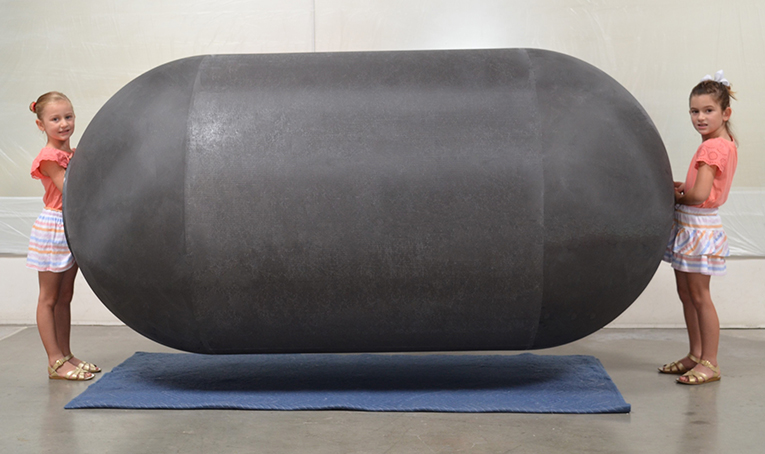
Cryofuels Come Under Pressure
Subheadline
A carbon composite tank developed for NASA enables the move from fossil fuels to cryofuels
Replacing jet fuel with hydrogen would be good for business and the environment. Hydrogen generates no carbon emissions and packs three times the energy per pound of hydrocarbon fuel, but there are some problems. One of the biggest is that current airplane fuel tanks can’t safely hold hydrogen. A solution is the carbon-fiber Blended Hybrid Laminate (BHL) cryotank developed by Gloyer-Taylor Laboratories (GTL) Inc. of Tullahoma, Tennessee.
While NASA is testing it to carry liquid oxygen into space, a commercial airline is interested in the fact that the BHL can hold ultra-cold fuels without developing the microcracks that shorten the lifespan of other carbon composite tanks. Hydrogen has one of the lowest boiling points of any element, meaning its liquid form must be kept extremely cold, or it needs to be kept under remarkably high pressure.
That requires a strong tank, usually made of steel or aluminum. Paul Gloyer, president of GTL, said breakthroughs in the use of carbon fiber and resin to wrap tanks have made them lighter than equivalent metal tanks. He wanted them to be even lighter.
A proprietary combination of materials and a manufacturing process developed by the company has produced a new type of carbon composite tank with walls thinner than a business card. Gloyer describes the BHL cryotank as a “stiff balloon.” It can withstand repeated cycles of pressurization and thermal changes that occur as the tank is filled and emptied without developing the microcracks that result in dangerous leaks in other carbon tanks. The flexible nature of the material and thin construction mean the tank can hold more fuel per pound of tank mass.
A measurement of the force that leads tanks to crack is called microstrain. Conventional carbon-fiber cryotanks without liners tend to leak at about 3,000-5,000 microstrain. Testing has shown that the BHL tank can withstand more than 20,000 microstrain at cryogenic temperatures, said Gloyer.
Partly funded by multiple Small Business Innovation Research contracts from several NASA field centers including Marshall Space Flight Center in Huntsville, Alabama, the BHL is undergoing assessment for commercial space applications at the center. The BHL technology has the potential to reduce tank mass by 30% to 50% for small spacecraft propulsion systems, according to John Peugeot, a propulsion engineer at Marshall.
One space company is evaluating the new lightweight, high-capacity tank for its commercial lunar lander, according to Gloyer. A significant benefit of using the smaller, lighter tank will be the craft’s capacity to carry more technology and science payloads.
Meanwhile, several aircraft developers are combining the tank with hydrogen fuel cells and an electric engine to provide cleaner, cheaper long-distance air travel. Current cryotanks that fit on a plane are so heavy they can only carry 5% to 6% hydrogen by mass, supporting only short flights, according to GTL. The BHL cryotank, including insulation, can hold 60% to 70% hydrogen by mass.
This extra hydrogen would let a plane fly four times as far as a conventional jet fuel-powered aircraft, cutting operating costs in half and creating a strong economic incentive to switch to hydrogen fuel. Gloyer said the alignment of economic and environmental benefits could result in the rapid adoption of hydrogen fuel, reducing carbon emissions and enhancing prosperity.

This unique carbon composite tank developed by Gloyer-Taylor Laboratories with NASA support is lightweight, making it ideal for aviation. And it’s designed to hold cryogenic fuels under extreme pressure, so it can be used to hold hydrogen and replace fossil fuels, eliminating greenhouse gas emissions. Credit: Gloyer-Taylor Laboratories Inc.

Landing on a lunar surface is risky, and making the craft as light as possible is only one of many requirements. The mid-sized lander concept in this illustration, which would deliver a rover to the polar regions of the Moon, could benefit from a lightweight carbon composite tank developed by Gloyer-Taylor Laboratories. Credit: NASA













